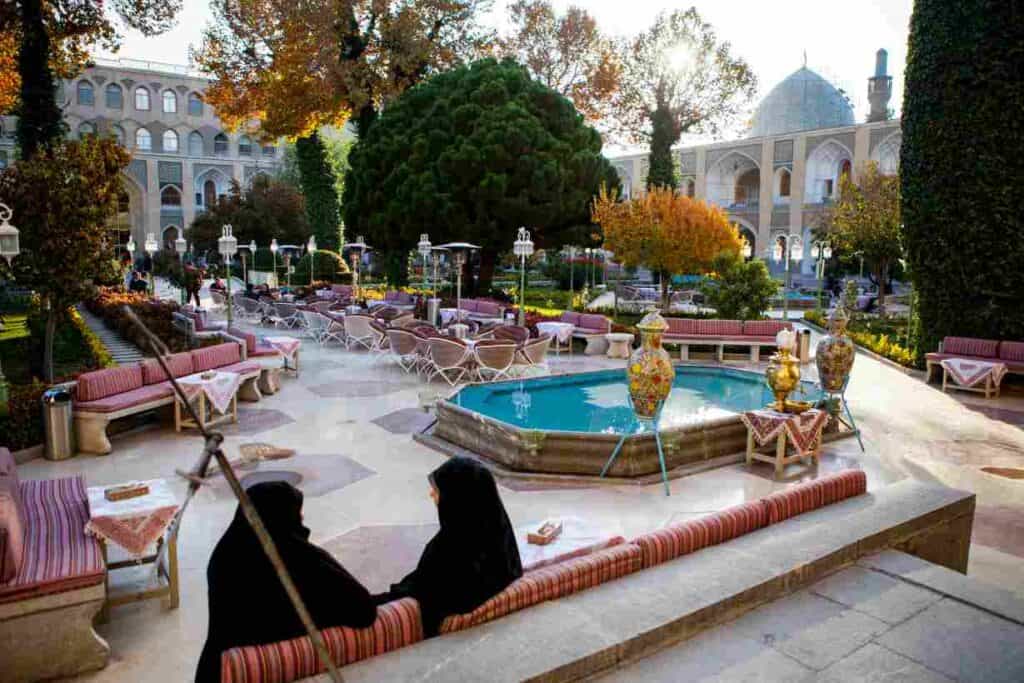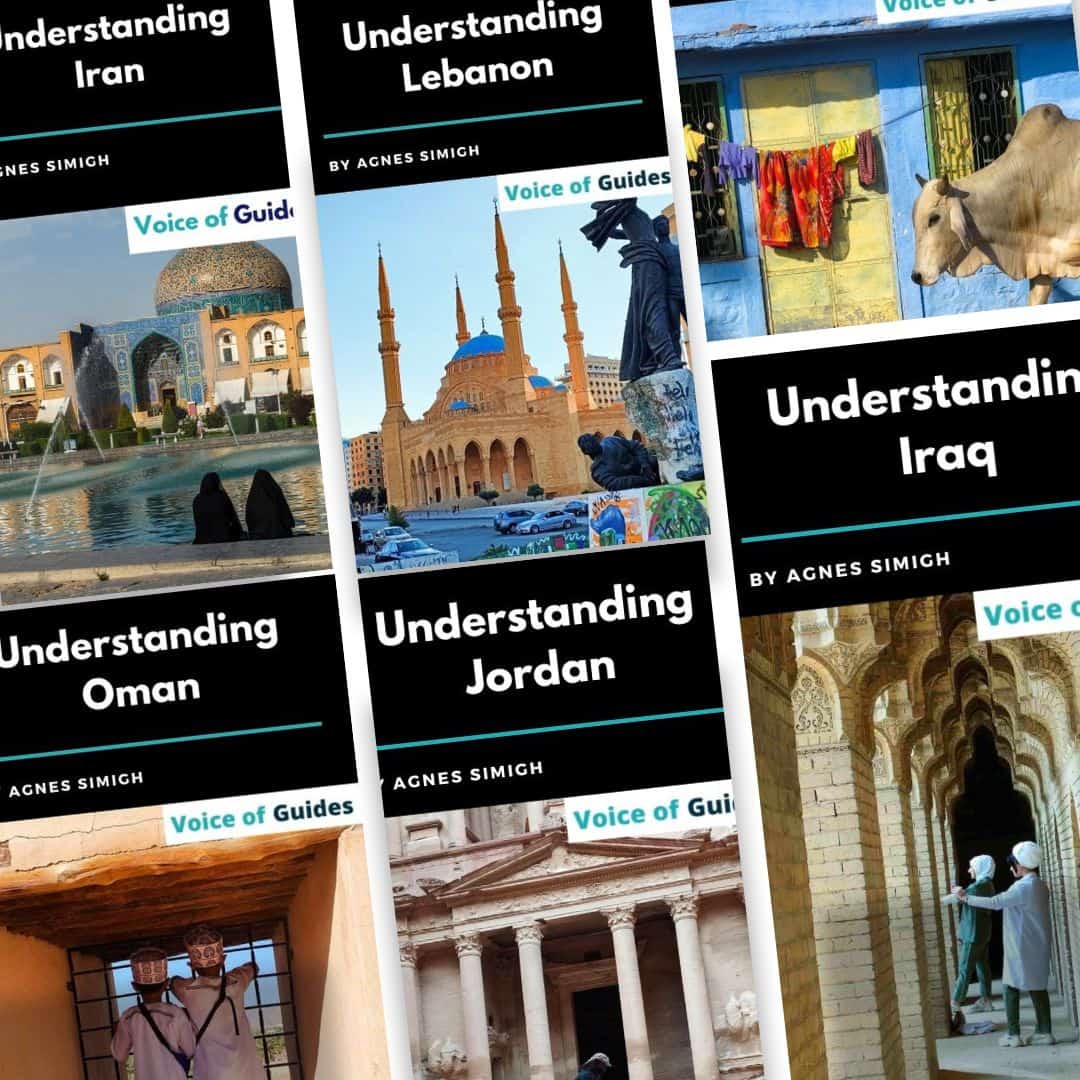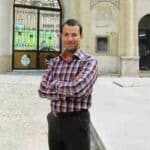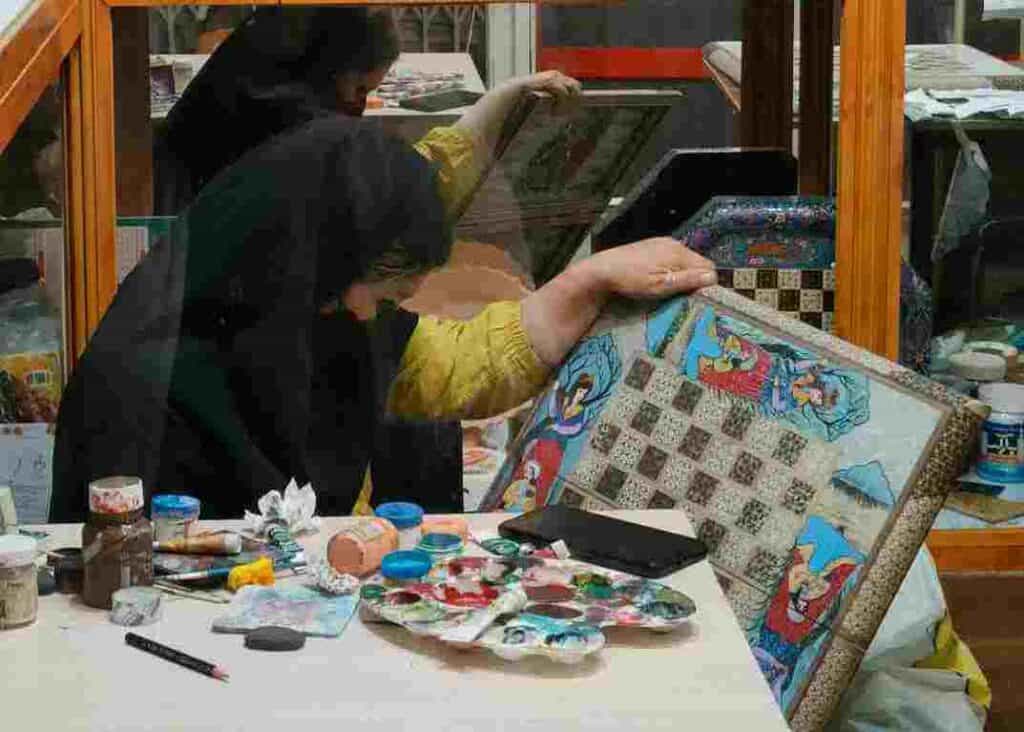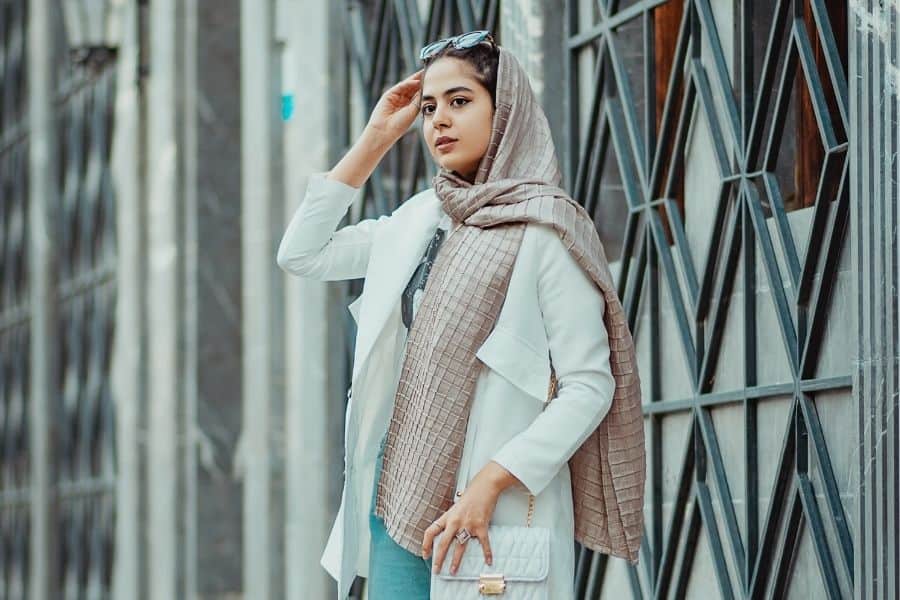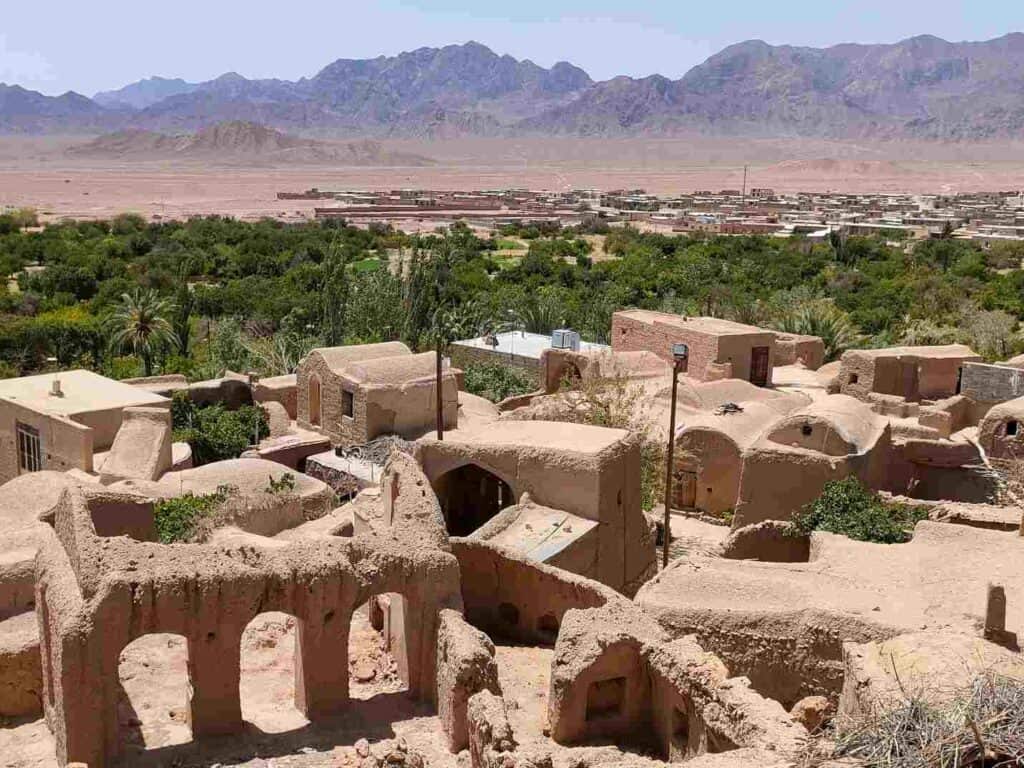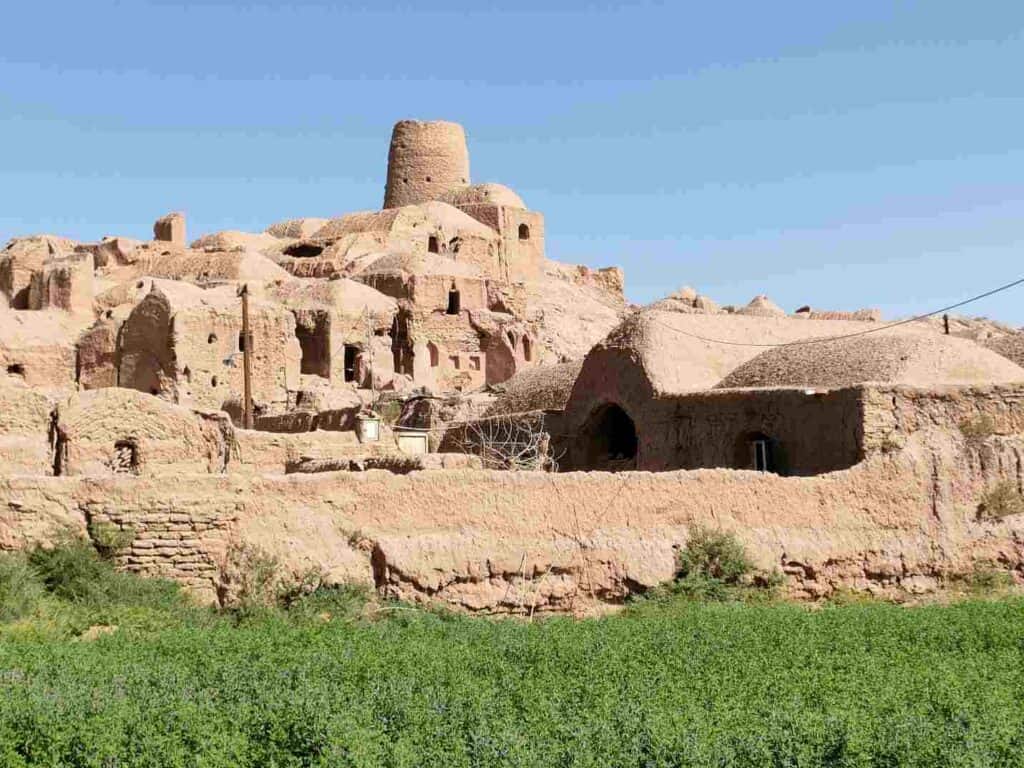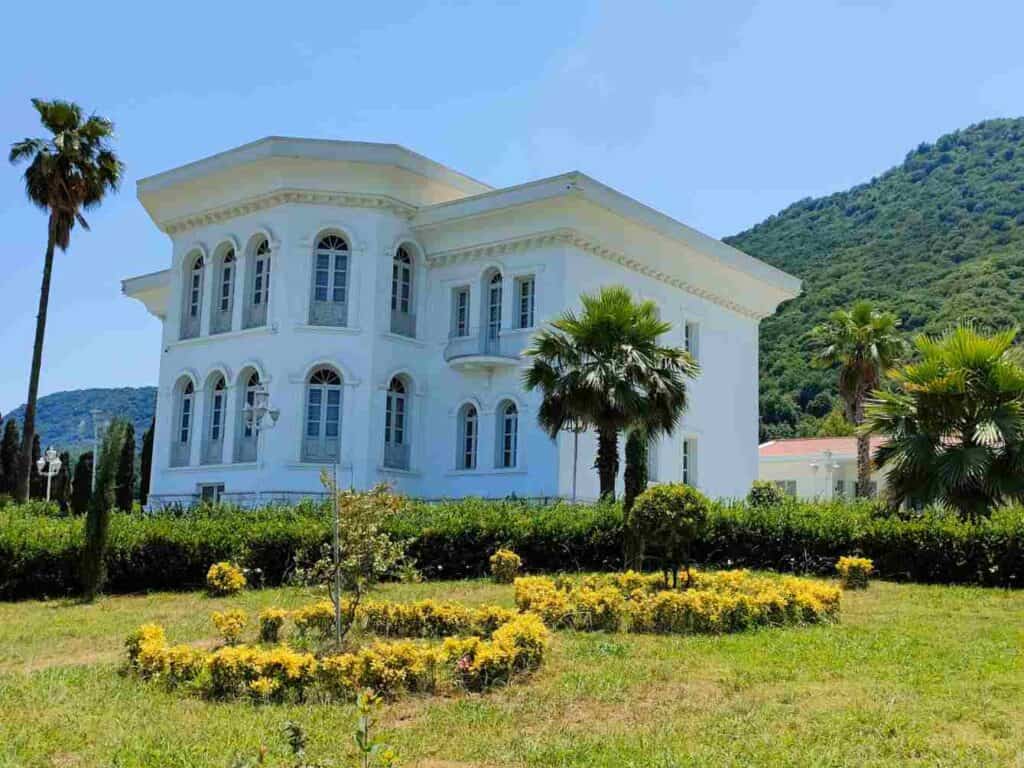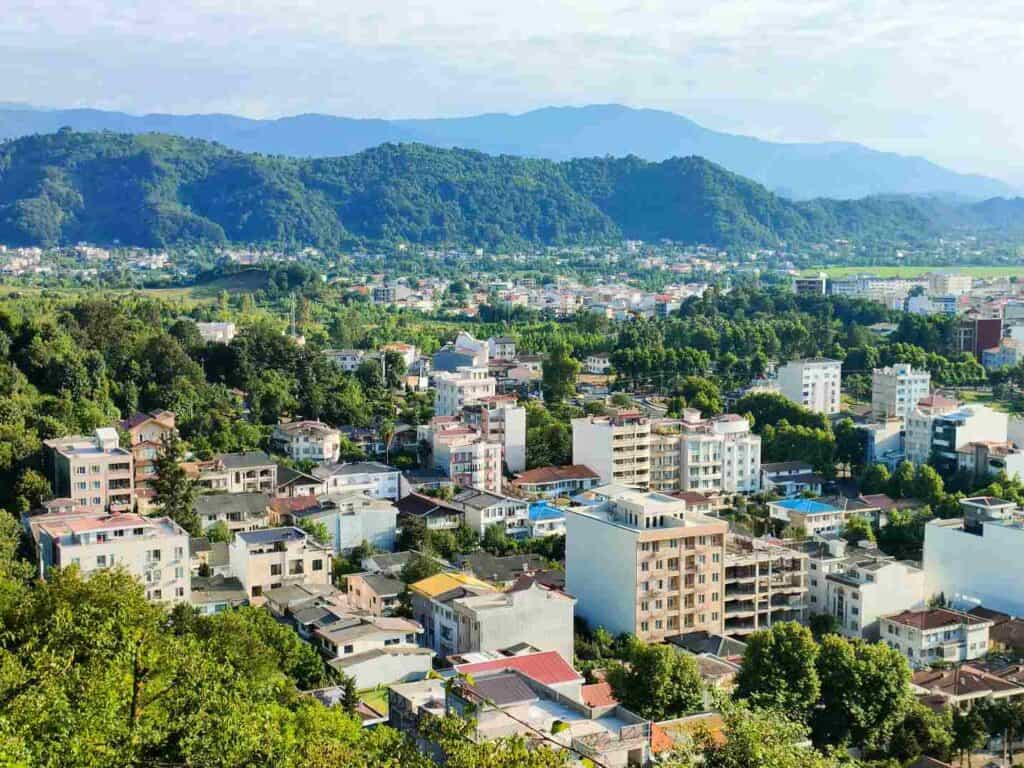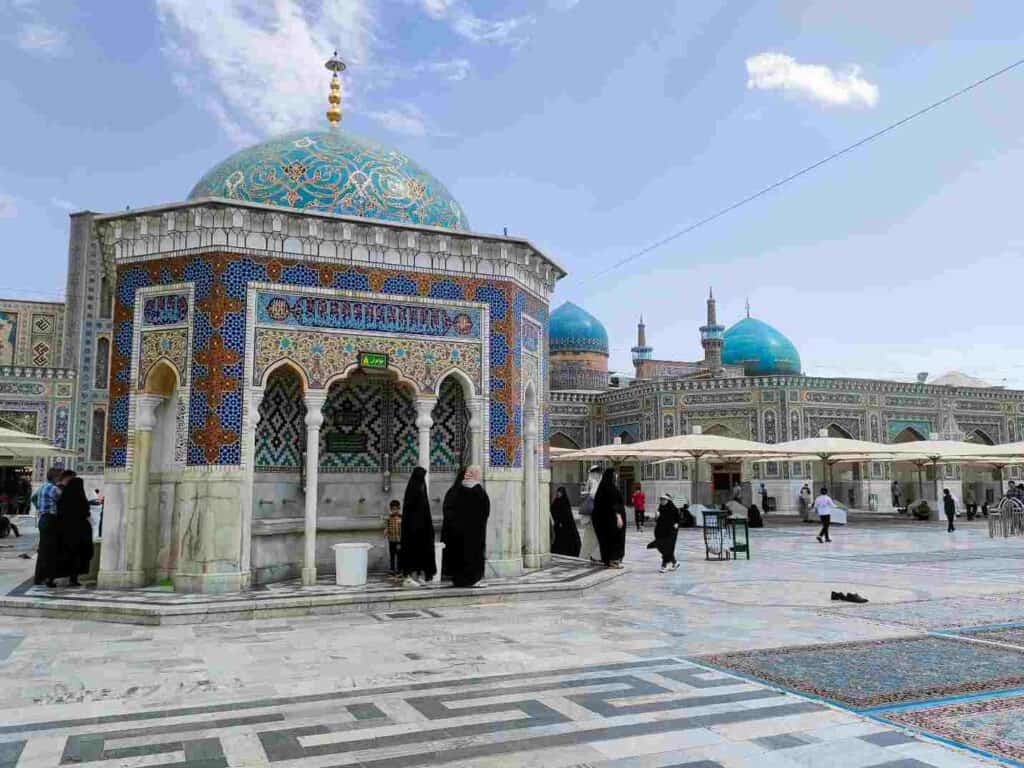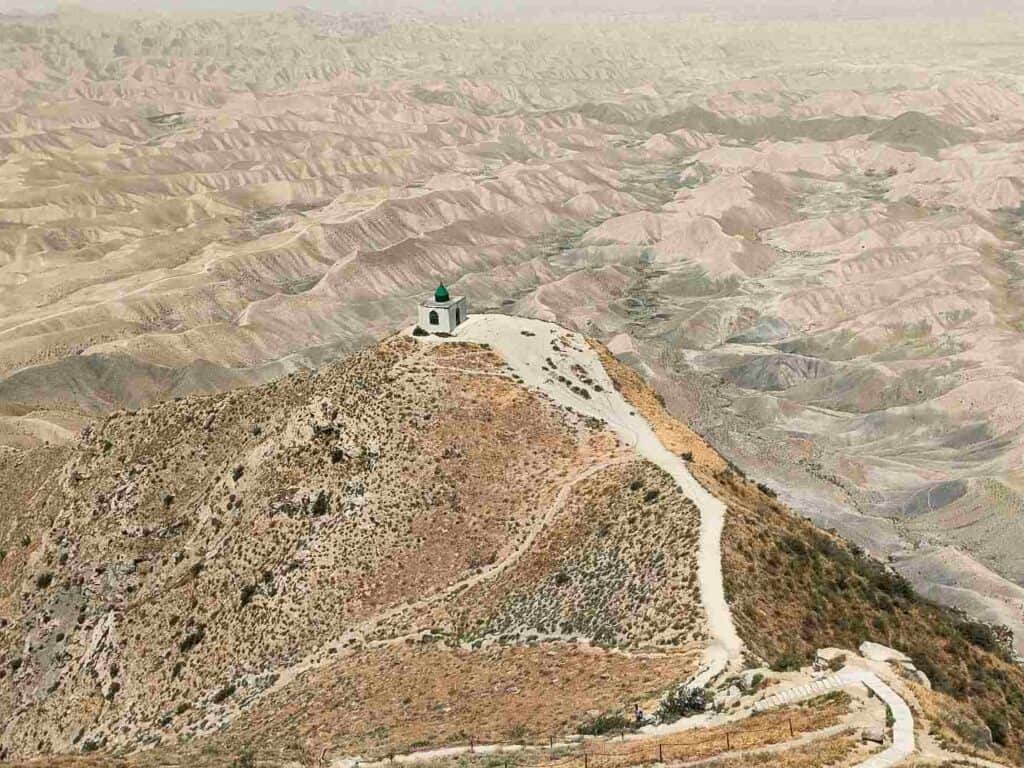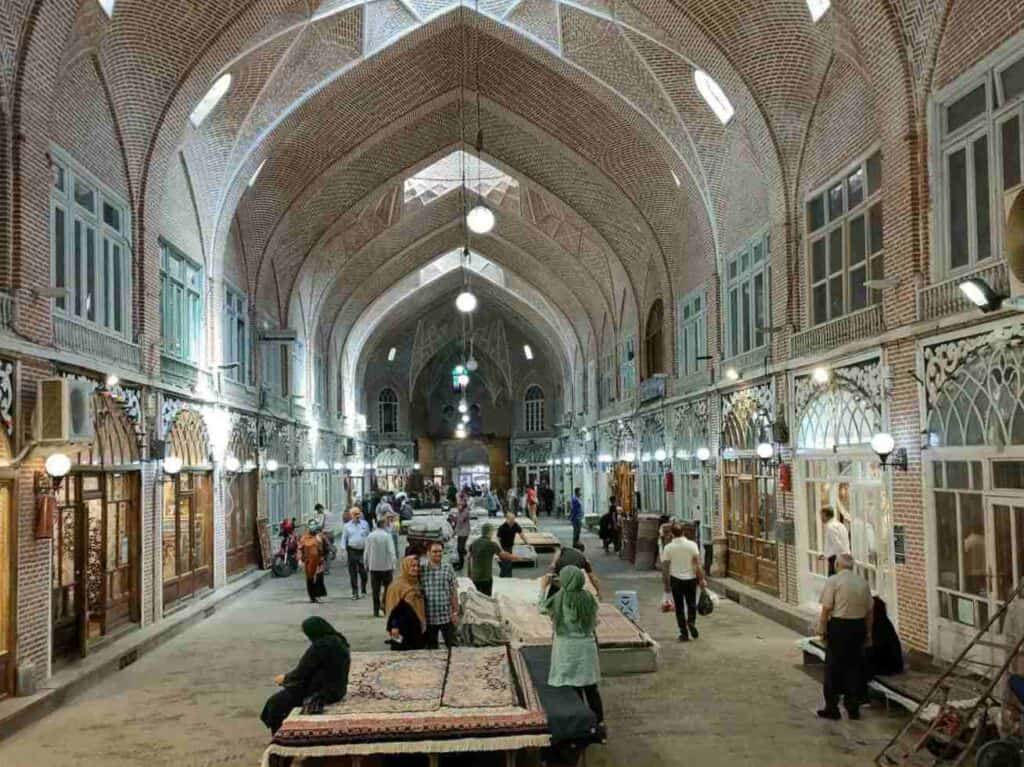This article may contain affiliate / compensated links. For full information, please see our disclaimer here.
Isfahan is a must-see when you are on your first trip to Iran. When after wandering through the labyrinth of the bazaar I reached the iconic Naqsh-e Jahan square I had my tears dropping on my cheek. This emotional reaction came as a surprise to me as well. Since I saw a picture about it I imagined myself walking around the square. The stunning decoration of the Sheikh Lotfollah and Imam Mosque even top this experience. I am an international tour guide taking groups among other destinations to Iran, and I compiled this travel guide about the best places to visit and things to do in Isfahan with the help of a fantastic Iranian tour guide, Amir.
How to go from Tehran/Kashan to Isfahan?
Isfahan is 216 km from Kashan and 450 km from Tehran. There are several daily buses from both cities to Isfahan.
Bus: There are several daily buses from Kashan and Tehran to Isfahan. It is enough to go to the station and buy your ticket on the spot. But you can also buy your ticket in advance here:
Train: There is a train between Tehran and Isfahan (8 hours, 1,100,000 – 1,300,000 IRR), but the downtown of Isfahan is still half an hour away from the railway station. It makes more sense to take the bus to and from Isfahan as the bus departs more frequently and the bus station is not far from downtown.
How to plan your trip to Iran
Book your flight to Iran: I always use Google Flights, Skyscanner or Wayaway to find the cheapest flight tickets worldwide. To get an extra 10% for your Wayaway Membership Plus program use my discount code VOG
Important: Booking.com and other common platforms do not work due to international restrictions in Iran. The only exemption is Skyscanner, where you can book both your international flight and accommodation in Iran!
Book your accommodation in Iran: Hostelworld.com offers a limited number of hostels. All other services are only available through local travel agencies, like 1st Quest.
Get your visa to Iran: 1st Quest or Tap Persia local companies can easily arrange your insurance for Iran
Book domestic flights, hotels, transfers, bus and train tickets, and local tours, all in one place via 1st Quest travel agency.
Another good thing is that by using my discount code, you get an extra 5% off your bookings: VOG%1stQ
Virtual Private Network (VPN): Use VPNExpress, the fastest and best Virtual Private Network to get access to blocked sites in Iran and to prevent hackers from stealing your private information.
Insurance to Iran: 1st Quest or Tap Persia local companies can arrange for you visa to Iran
Book local guides and local tours: Pirsik is specialized in offering tour guides and local tours in less touristic countries, including Iran.
What you should know about Isfahan
Once the world’s biggest city, Isfahan, was a meeting point for people and an important exchange place of products along the Silk Road. European travelers admired it, and due to its cultural importance, Lord Byron compared it to Rome and Athens. It became an architectural gem in the 16th and 17th centuries under the rule of Abbas Shah of the Safavid dynasty. They called it Isfahan, the “half of the world”.
Today Isfahan is the 3rd biggest city of Iran behind Tehran and Mashhad. It is still the center of Persian culture and one of the most livable cities in the Islam world. This town lies at the foot of the Zagros mountain along the Zayanderud River.
The best two-week itinerary when you are the first time in Iran
Isfahan became a prominent city during the 250-year-old Safavid rule (1501-1736), primarily thanks to Abbas I., who converted it into an attractive capital. He created large boulevards, the Naghs-e Jahan square (double the size of the Red Square in Moscow), the vast Isfahan bazaar, mosques and a royal residence. He permitted Armenians and other ethnic groups from the Caucasus to settle down. The Armenian district, Jolfa still exists and is one of the oldest in the world. It was during the Safavid rule that the population became a follower of the Shiite branch of Islam. Abbas Shah also created the Persian national identity that had not existed for a long time. Arts and science flourished, and they constructed the most beautiful buildings of Iran.
But after the Golden Age of Persia, Afghans invaded it and dethroned the last Safavid ruler. It lost its central political role but remained an important cultural center. The Isfahan carpets, handicrafts and sweets are well-known in the whole of Iran. Isfahan is a perfect place to observe the Persian culture and lifestyle. Here, people are always busy shopping in the bazaar or along the Chahar Bagh.
Pin it!
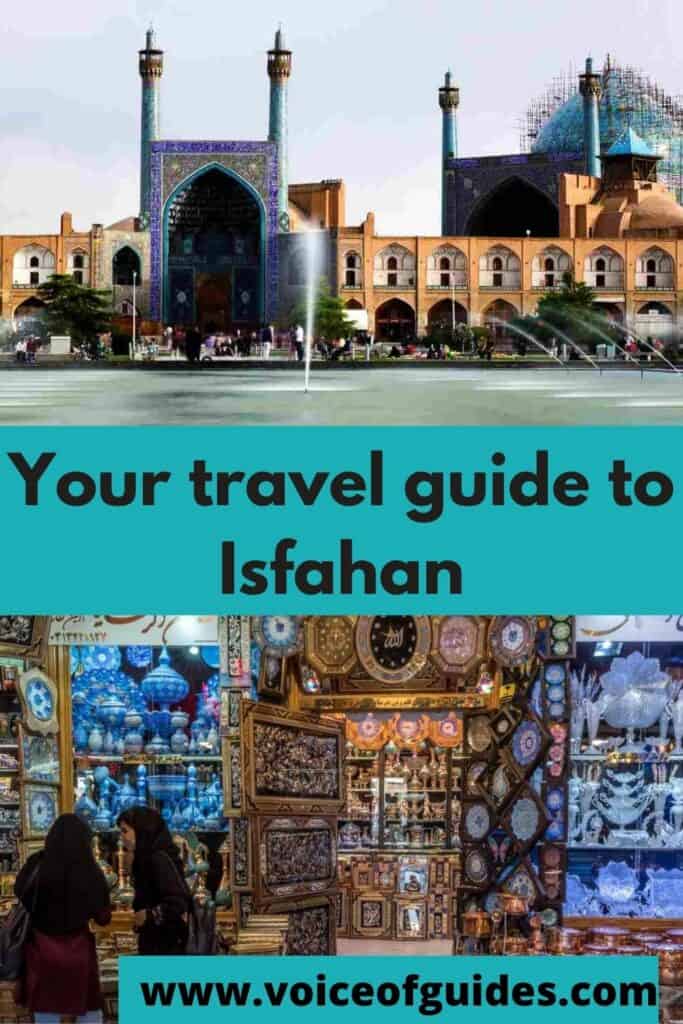
Esfahan or Isfahan
It is confusing for the visitors to see two types of spelling for the city. The correct pronunciation and spelling in the local Persian language are Esfahan. However, in English, they say and write it Isfahan. Both are correct.
What you must see and do in Isfahan
Entrance fees: The below-listed entrance fees are from 2019 (before COVID times). By normal reopening, they are expected to change but the exact prices are not known for the moment.
Because of economic sanctions and the pandemic, prices of basic facilities and products tripled or quadrupled. It means that the entrance fees can significantly increase too.
Jameh mosque
The former principal mosque of Isfahan lacks the attractive blue-tiled decoration of Isfahan. But there is so much history in this simple brick structure. It was constantly reconstructed and expanded between the 8th and 20th century, and it has the touch of all the different eras. Thanks to that, it was listed as a UNESCO Heritage. The square next to the mosque was the old commercial center until the vast Imam square took over that role. The inner courtyard is the largest in the whole Islamic world. Some say the Jameh mosque manifests all the elements of the Iranian architecture.
Opening hours: 09:00 17:00
Entrance fee: 200,000 Rials
Stroll along the Chahar Bagh Boulevard
Stroll along the 6-km-long attractive street that connects the Imam square with the riverbank. When Abbas I moved its capital to Isfahan, he wanted to convert it into a splendid place that impresses the world. He ordered to build attractive villas for foreign dignitaries along the Boulevard, like the Hash Behest or Cehel Sotun palaces.
It is a top shopping place with restaurants, cafés, and gardens where Persians like finishing their day.
Chehel Sotun (40 columns) palace
The pavilion-shaped royal palace stands in the center of a Persian garden with a pool in front. Abbas II of the Safavid dynasty used it for festivities and official receptions. It got its name after the 20 wooden columns that decorate the facade. But as they reflect in the water, there seem to be 40 indeed, hence the name. Extensive frescos of historical battles or royal visits cover the whole interior surface. The Chehel Sotun is one of the 9 Persian gardens
Opening hours: 09:00 16:00
Entrance fee: 200,000 Rials
Nagsh-e Jahan (Imam square) – the landmark of Isfahan
One of the largest and most beautiful public squares has a couple of different names: Nagsh-e Jahan, Imam Square, or Shah Square. Locals prefer calling it Nagsh-e Jahan, which means “Image of the World.” The 560-meter-long and 160-meter-wide area covers nearly 90,000 m² and appears on the 20 000 Rial banknote of Iran.
Abbas I. undertook one of the most challenging projects of Persia and converted Isfahan into the new capital. He imagined the royal square in the center, which was a polo-playing field at that time. He aimed to gather the three principal sources of power in Persia in one place: the ruler, the priesthood, and the merchants.
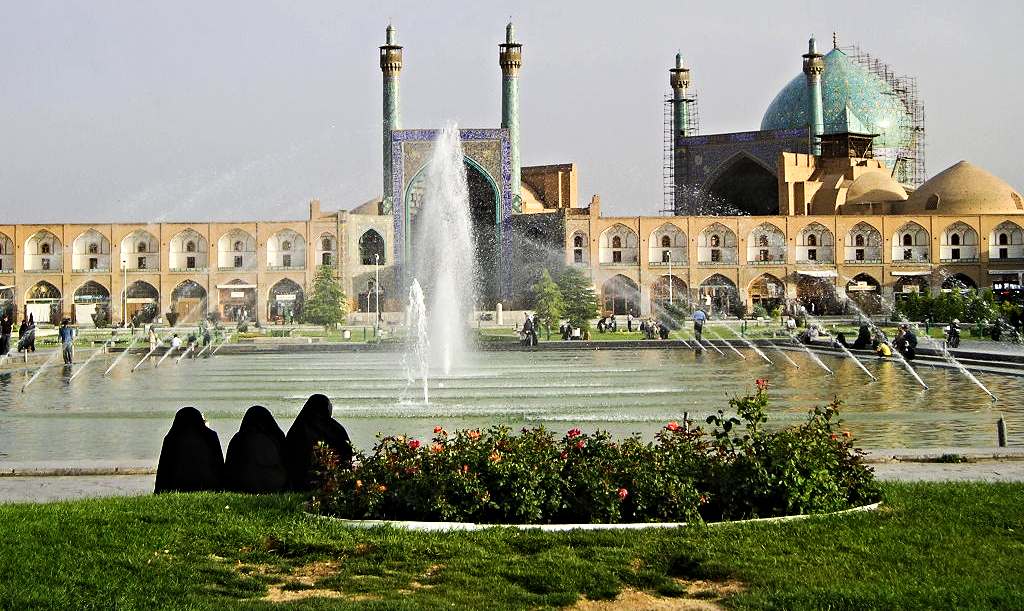
Thus, Ali Qapu became the royal residence, the Royal Mosque (Imam Mosque) and the Sejk Lotfollah Mosque the scene of prayers, and the Imperial Bazaar the venue for merchants. The four structures break the excessive symmetry. The Nagsh-e Jahan was originally used for military parades, and later it was here where the ruler appeared to the public. It became the center of entertainment and trade. During the day, tents and stalls filled the space, for which merchants paid weekly rentals. Fresh food, melons, and unlimited water were distributed free of charge by the shopkeepers. At the entrance to the bazaar, people could relax in one of the cafés and have a shisha. At the end of the day, the merchants emptied the square, and marionette players, acrobats, actors and dervishes took their places to entertain the public.
No wonder that Isfahan was one of the most stunning cities in the world, and the merchants traveling along the Silk Road spread its good reputation.
The big square is still a social hub, where they organize ceremonies and celebrations. The flowers, trees, swimming pools and fountains provide a relaxing ambiance. In the evening, locals flood into the bazaars. Many do a picnic in the grass or meet for a chat while chariots are passing by. It is impressive to see in daylight and at night.
The best two-week itinerary when you are the first time in Iran
Imam mosque (Royal mosque)
The Imam mosque replaced the old Jameh mosque for Friday prayings. Abbas I. urged to finish the construction in his lifetime despite his architect’s warning that the rush can cause serious deficiencies. Thus, they covered it with a cheaper tile. Some months after they finished the mosque, the Shah died.
It has a typical four-iwan structure, which means that identical towering gates surround the inner courtyard from four sides. The turquoise tile decoration and muqarnas are characteristic elements of the Persian architecture. It has a perfect acoustic, so the devotees could perfectly hear the speech of the imam. The mosque also gave home to a medrese, a Quran school.
Since the Arabs first constructed domes in the 7th century, they became common for the Islamic architecture. Some of the largest domes belong to Iranian mosques. They got their blue tile cover during the Safavid rule that has become the symbol of Iran. The travelers of the Silk Road spotted the shining turquoise domes from a far distance, which gave them a clear direction. The 53-meter high dome of the Imam mosque is the largest in whole Isfahan.
Opening hours: 09:00 – 17:00
Entrance fee: 200,000 Rials
Sheikh Lotfollah mosque
Sheikh Lotfollah was a respected scholar of his time, and Abbas I. invited him to his court. It was the first structure along the square to serve a private praying hall for royal ladies as opposed to the public Imam square. For that, it has no minaret and is way smaller. Its doors stayed closed and guards were watching the entrance. Some still question if it was a mosque at all. The compulsory elements, like the minaret, iwan, or the arched courtyard are missing.
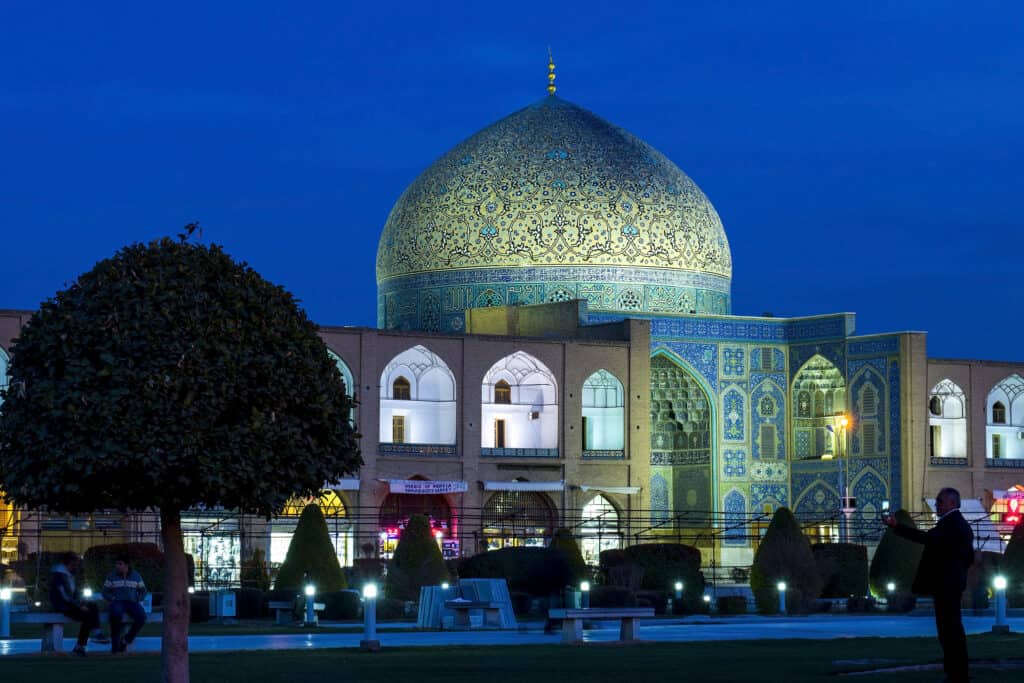
But its interior decoration is more sophisticated than that of the Imam mosque and is, therefore, the highlight of the mosque. A peacock design in the center looks amazing in the morning light.
The Lotfollah mosque has a complex mosaic tile decoration. The entrance itself took four years to complete.
Opening hours: 09:00 – 17:00
Entrance fee: 200,000 Rials
Ali Qapu (Imperial Gate) palace
It was the royal residence of king Abbas I. that extended till the Chahar Bagh Boulevard. The king welcomed and entertained his prominent guests in the six-floor-palace connected with narrow spiral staircases. The walls display frescos with birds, mothers and nature. From the top galleries, they could follow the polo matches. Elegant Stucco decoration, music room and fountain on the terrace.
Opening hours: 09:00 – 18:00
Entrance fee: 200000 rials
Isfahan Grand Bazaar (Qeysariyeh Bazaar)
The immense Grand Bazaar of Isfahan connects the Old Square with Nagsh-e Jahan and encircles the whole space. It is one of the most beautiful bazaars. Surprisingly, the traditional bazaar culture is still very much alive in Iran. It is the favorite spot for Iranians to go shopping.
Abbas I. ordered to build the greatest luxurious bazaar at that time as part of the large-scale reconstruction of Isfahan. Tons of shops sell handicrafts, copper, brassware, turquoise ceramics, carpets, fabrics, dresses and spices. You will discover some gems in the small shops. The use of turquoise color in such a volume is marvelous. Strolling through the bazaar is a cultural experience at the same time, where hundreds of years-old mosques and schools pop up as a surprise.
You may feel you got lost in the narrow alleys that look alike, but in the end, all lead to the magnificent Nagsh-e Jahan square.
Tip: Return to the square and the bazaar in the evening, when Iranians come for shopping or have a picnic. It is the social hub of Isfahan.
Opening hours: The bazaar is open usually from 10:00 am till 09:00-10:00 pm
Abbasi Hotel
The Abbasi Hotel is an attraction of Isfahan itself along with the Chahar Bagh. Even if you are not a hotel guest, you can take a walk around in the caravanserai-style Persian garden and have a café. Some say the 300-year-old building is the most beautiful hotel in the world.
Visit the historical bridges of Isfahan
The riverside is another touristic attraction of Isfahan. The Zajenderud is the principal water source of the Yazd and Isfahan regions. The 11 bridges spanning over the river are Persian architectural gems, but two of them stand out.
Khaju Bridge
The Khaju Bridge is the most beautiful of all of them due to the decorative tiles and frescos. The middle part of the bridges is spacious so that horses and chariots could also use them. The bridges functioned as water dams and the center of social gatherings.
Abbas II. wanted the Khaju Bridge to be the most impressive, so he installed a pavilion with a throne out of stone in the center, from where he enjoyed a great view of the city. The pavilion contained rooms where the king could hold public meetings and served as a temporary residence.
There are two stone statues of lions standing on each side of the Khaju Bridge. They are identical, and legend has it that the lions’ eyes glow in the midnight.
The bridge, the surrounding stairs, and parks are popular meeting spots for locals. In the evenings and outside working hours it gets crowded. Young Iranians occupy the lower arches, where they play music, sing or have a Shisha.
Tip: come back in the evening when the bridge is illuminated and get involved in the local life.
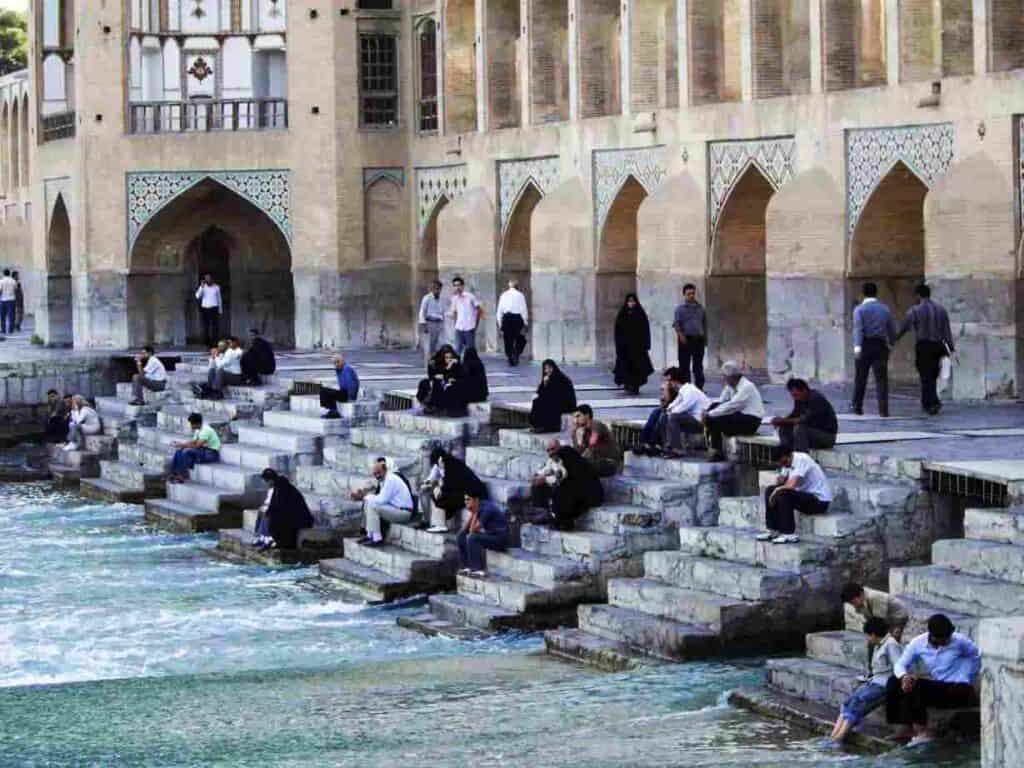
Si-o-Seh Pol
Its name refers to the 33 arches of the double-level bridge that connects the wealthy Esfahan with the Armenian district. It is the longest of all the bridges with almost 300 meters, located at the southern end of Chahar Bagh Avenue. The 400-year-old bridge is also a popular meeting place for locals.
Armenian district
If you cross the Si-o-Seh Pol bridge, you get into the Armenian district of Isfahan, called New Jolfa. Most of the residents are still Armenians, but it is getting popular among young Persians too. The Armenian shops, orthodox churches and restaurants give it a different appearance from the rest of Isfahan. It is still one of the oldest and biggest Armenian quarters in the world. Armenians in Iran follow the Persian traditions, but they preserve their identity and speak Armenian. As stated in the Constitution, Christians, Jews, and Zoroastrians can freely practice their religion. It does not apply to the Bahai believers, although it was born in Iran.
The Armenian quarter is a gem in Isfahan. The charming streets with cafés and restaurants create a pleasant atmosphere that keeps you staying longer than expected. During Christmas, they set up Christmas trees and decorate the area with lights. A good time to come here.
But how did Armenians arrive here?
King Abbas I. provided shelter for the Armenians escaping from the Osman Empire in exchange for their commercial networks as successful merchants. They still preserve their identity, culture and have several temples in the district.
Vank (Holy Savior Cathedral) orthodox cathedral
The most well-known attraction in the Armenian district is the Vank cathedral. The Christian house of worship makes you forget for a moment that you are in the Islamic Republic of Iran. It became the model of other orthodox churches built in the district.
Abbas I. built this temple for the Armenian community. Its architecture is a mix of European and Persian styles.
Vank means monastery in Armenian. Behind the plain brick facade, the interior is covered with stunning frescos depicting Biblical scenes, golden carvings and colorful tiles. The frescos of Adam and Eve’s expulsion from the Garden of Eden or the Last Judgement could be in an Italian Church.
In the courtyard, there is an orthodox and protestant cemetery and an impressive bell tower. In one corner, a memorial commemorates the Armenian genocide of 1915 by the Osman Empire.
The adjacent library contains a rich collection about the history of the cathedral and the Armenians in Isfahan.
Tip: Visit the adjacent museum that tells the story of the Armenian genocide (1915-1917) and the orthodox Christian religion.
Tip: The Toranj Restaurant is an amazing Armenian style restaurant with a garden (Address: Ramin Alley, Hovanes St., Khaghani St., Jolfa District, Isfahan)
Opening hours: 09:00 – 18:00
Entrance fee: 500,000 Rials
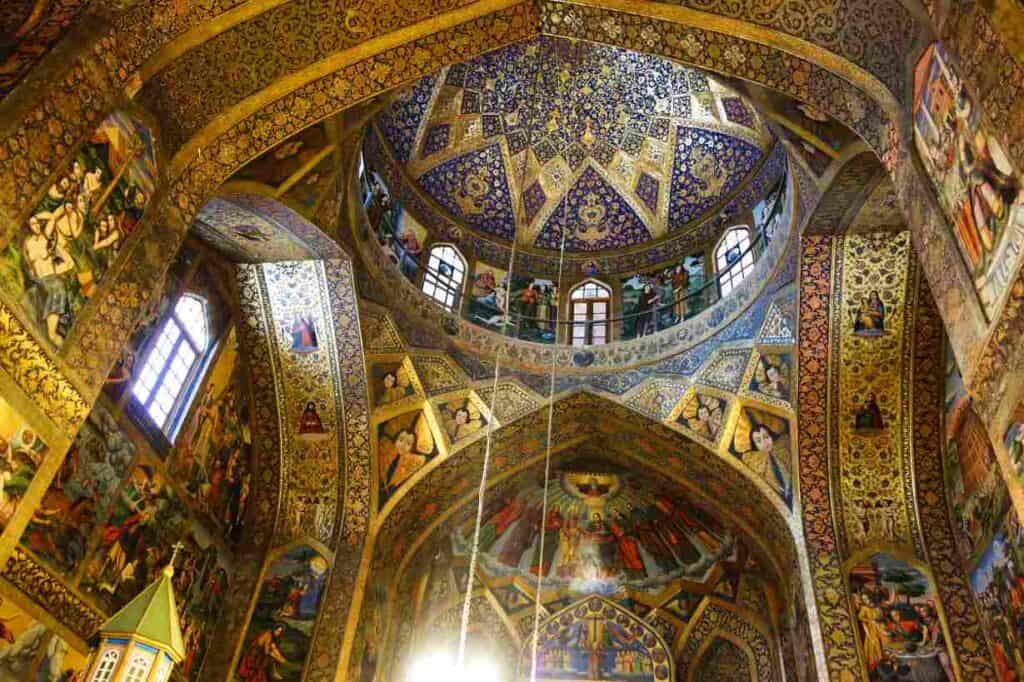
Bethlehem Church
An Armenian merchant built this temple during the reign of Abbas I. in 1627. Armenians artists decorated the interior of the temples with paintings form the life of Jesus.
Opening hours: 09:00 – 17:00
Entrance fee: 50,000 Rials
What you should taste in Isfahan
Biryani is the most famous Iranian specialty that you can only eat in some restaurants (Beryani). These restaurants are specialized in serving only Biryani. Shad Biryani near the Naqsh-e Jahan Square, Darvazeh Dowlat Street, at the beginning of Taleghani Street is one of the best choices to try that. But do not expect anything similar to the Indian style of Biryani. The Iranian version is a patty made from fried lamb meat and minced liver placed in the middle of a Sangak bread.
Khoresht Mast: A yogurt stew, a traditional dessert from Isfahan. Boneless lamb neck meat mixed with yogurt, saffron, and rosewater. Best to eat after cooled down in the fridge.
Kaleh Joosh: Kaleh Joosh is a vegetarian meal, a whey soup seasoned with onion, walnut, dried mint, and spices. Often served with Sangak bread.
Gaz: the Iranian sweet with almond and pistachio
Pulaki: This is like a very thin coin, which starts dissolving as soon as you take it in the mouth. Sugar, water, white vinegar, saffron, dried lime, or cocoa powder are the main ingredients.
The best two-week itinerary when you are the first time in Iran
Where to sleep in Isfahan
Mahbibi Hostel and Sarv hostel: top-rated hostels for backpackers near the city center
Partikan (1 star): Saadi Alley, Nagh-e Jahan sq, Isfahan
Sheikh Baha’i (3 stars); Address: 4th Alley, at the beginning of Sheikh Baha’i Street, Isfahan
Safir (3 stars); Address: Amadgah St., Isfahan
Setareh (3 stars); Address: Hafez St., Naghsh-e Jahan sq, Isfahan
Aseman (4 stars); Address: In front of the Felezi bridge, Motahhari St., Isfahan
Abbasi (5 stars); Address: Amadgah St., Isfahan
How to plan your trip to Iran
Book your flight to Iran: I always use Google Flights, Skyscanner or Wayaway to find the cheapest flight tickets worldwide. To get an extra 10% for your Wayaway Membership Plus program use my discount code VOG
Important: Booking.com and other common platforms do not work due to international restrictions in Iran. The only exemption is Skyscanner, where you can book both your international flight and accommodation in Iran!
Book your accommodation in Iran: Hostelworld.com offers a limited number of hostels. All other services are only available through local travel agencies, like 1st Quest.
Get your visa to Iran: 1st Quest or Tap Persia local companies can easily arrange your insurance for Iran
Book domestic flights, hotels, transfers, bus and train tickets, and local tours, all in one place via 1st Quest travel agency.
Another good thing is that by using my discount code, you get an extra 5% off your bookings: VOG%1stQ
Virtual Private Network (VPN): Use VPNExpress, the fastest and best Virtual Private Network to get access to blocked sites in Iran and to prevent hackers from stealing your private information.
Insurance to Iran: 1st Quest or Tap Persia local companies can arrange for you visa to Iran
Book local guides and local tours: Pirsik is specialized in offering tour guides and local tours in less touristic countries, including Iran.
Recommended Restaurants in Isfahan
Bastani restaurant: a nicely decorated traditional restaurant (Address: South Corridor of Naghsh-e Jahan sq, Isfahan)
Aseman Hotel Revolving Restaurant: a top experience to enjoy the view of Isfahan with great food. (Address: In front of the Felezi bridge, Motahhari St., Isfahan)
Toranj Restaurant: amazing Armenian style restaurant with garden (Address: Ramin Alley, Hovanes St., Khaghani St., Jolfa District, Isfahan)
Recommended tours from Isfahan
1. Go to the Mesr desert (2 days)
If you missed the desert program in Kashan, you could opt for that from Isfahan as well. Visit the salt lake and the Farahzad village.
2. The ultimate Isfahan day (6 hours)
This is an absolutely unique experience. Apart from visiting the main sites of Isfahan (Sejk Lotfollah, Naqsh-e Jahan Square, and the Jameh mosque, you experience Persian culture at its best. You learn how to draw with enamel in a professional workshop, a 5000-year-old tradition, then you enjoy the ambiance of the bazaar. At the end of the day, you learn how to cook a traditional Persian meal in a Persian home listening to local music. It sounds like a perfect day!
Check the price and book your tour in Isfahan
Hope you found the above guide to Isfahan useful. If you look for a place to find the majestic Persia, the blue-tiled architecture, and the authentic bazaar, then it is Isfahan. It is time to rediscover once one of the most majestic cities of the Silk Road.
Leave a comment if you liked the post or you have a question.

